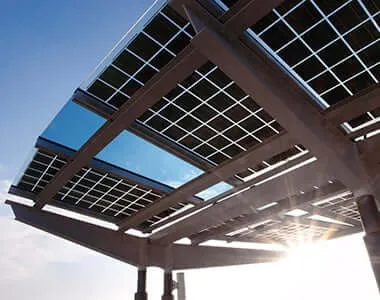common solar panel sizes
Common Solar Panel Sizes Understanding Your Options
Solar energy has rapidly become one of the most popular forms of renewable energy, and with that surge in popularity comes an array of options, particularly concerning solar panel sizes. Choosing the right size for your solar panels is critical to effectively harnessing this sustainable energy source, whether for residential, commercial, or industrial use. This article delves into common solar panel sizes, their implications, and what you should consider when selecting the right panels for your needs.
Standard Sizes of Solar Panels
Solar panels come in various sizes, but the most commonly used residential solar panels usually fall within the range of 60 to 72 cells
.1. 60-Cell Panels Standard residential solar panels typically measure about 65 inches by 39 inches. These 60-cell panels are popular due to their balance between size, efficiency, and power output. They generally produce between 250 to 350 watts of electricity, making them suitable for most residential needs, especially for homes with limited roof space.
2. 72-Cell Panels Slightly larger than their 60-cell counterparts, 72-cell panels measure approximately 77 inches by 39 inches. These panels are often used in commercial settings or larger residential installations. They can produce between 300 to 400 watts, which can be beneficial for homes with ample roof space or for businesses looking to maximize energy output.
3. Small Panels There are also smaller, compact solar panels designed for specific applications such as RVs, boats, or small off-grid systems. These panels typically measure around 32 inches by 21 inches and produce between 50 to 100 watts. While they don’t provide the same output as larger panels, their size allows for versatility in various installation scenarios.
Factors to Consider When Choosing Solar Panel Size
common solar panel sizes

When selecting the size of the solar panels, several factors should influence your decision
1. Available Space The amount of available roof space is often the first consideration. If space is limited, smaller panels with higher efficiency ratings may be a preferable choice. In contrast, if you have ample roof area, larger panels may be more practical for maximizing energy production.
2. Energy Needs Understanding your energy consumption is crucial. A typical household consumes around 877 kWh per month. Based on this consumption, calculating the number of solar panels required becomes straightforward. For instance, if you opt for a 300-watt panel, you would need approximately 12 to 15 panels to meet your energy needs, depending on your local solar insolation.
3. Efficiency Not all solar panels are created equal. Some brands offer higher efficiency panels that take up less space but come at a premium price. It’s essential to weigh the cost against the potential savings on your energy bill when considering efficiency.
4. Orientation and Angle The orientation and tilt of the solar panels can significantly affect their performance. Panels that face south and are installed at an angle (based on your latitude) maximize sunlight exposure and, consequently, energy generation, making size considerations even more critical.
Conclusion
Understanding the common sizes of solar panels and considering factors such as available space, energy needs, and efficiency is essential for anyone looking to invest in solar energy. Whether you opt for 60-cell or 72-cell panels, or smaller alternatives, making an informed choice will ensure that your solar panel system provides optimal performance and contributes to a sustainable future. As solar technology continues to evolve, staying informed about the latest advancements in solar panel sizes and efficiencies will empower you to make the best decisions for your energy needs.
-
String Solar Inverter: The High-Efficiency Solution for Smart Solar EnergyNewsJul.14,2025
-
Revolutionizing Rooftop Energy with the Power of the Micro Solar InverterNewsJul.14,2025
-
Power Independence with Smart Off Grid Solar Inverter SolutionsNewsJul.14,2025
-
On Grid Solar Inverter: Powering the Future with Smart Grid IntegrationNewsJul.14,2025
-
Monocrystalline Solar Panels: High-Efficiency Power for the Future of Clean EnergyNewsJul.14,2025
-
Bifacial Solar Panel: A Smarter Investment for Next-Generation Energy SystemsNewsJul.14,2025







